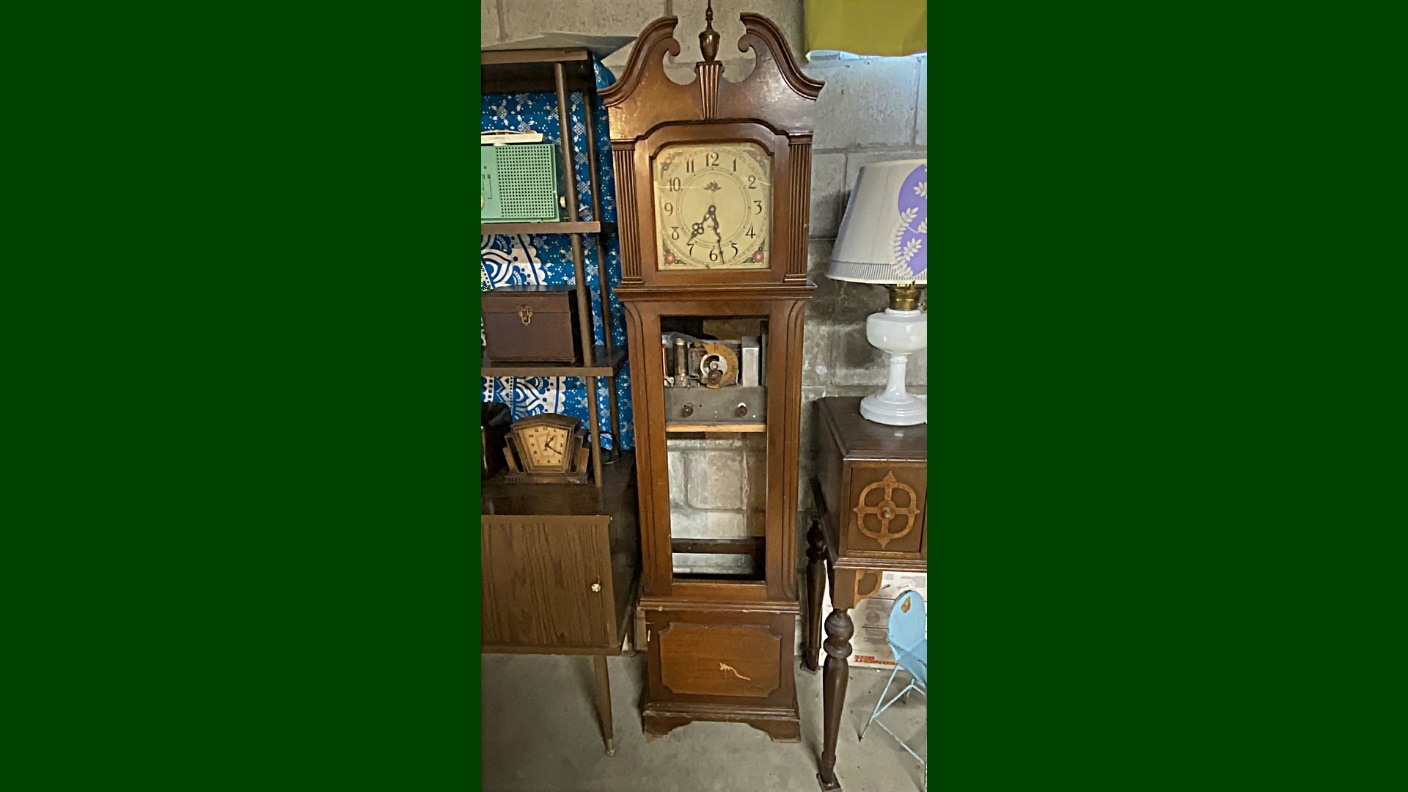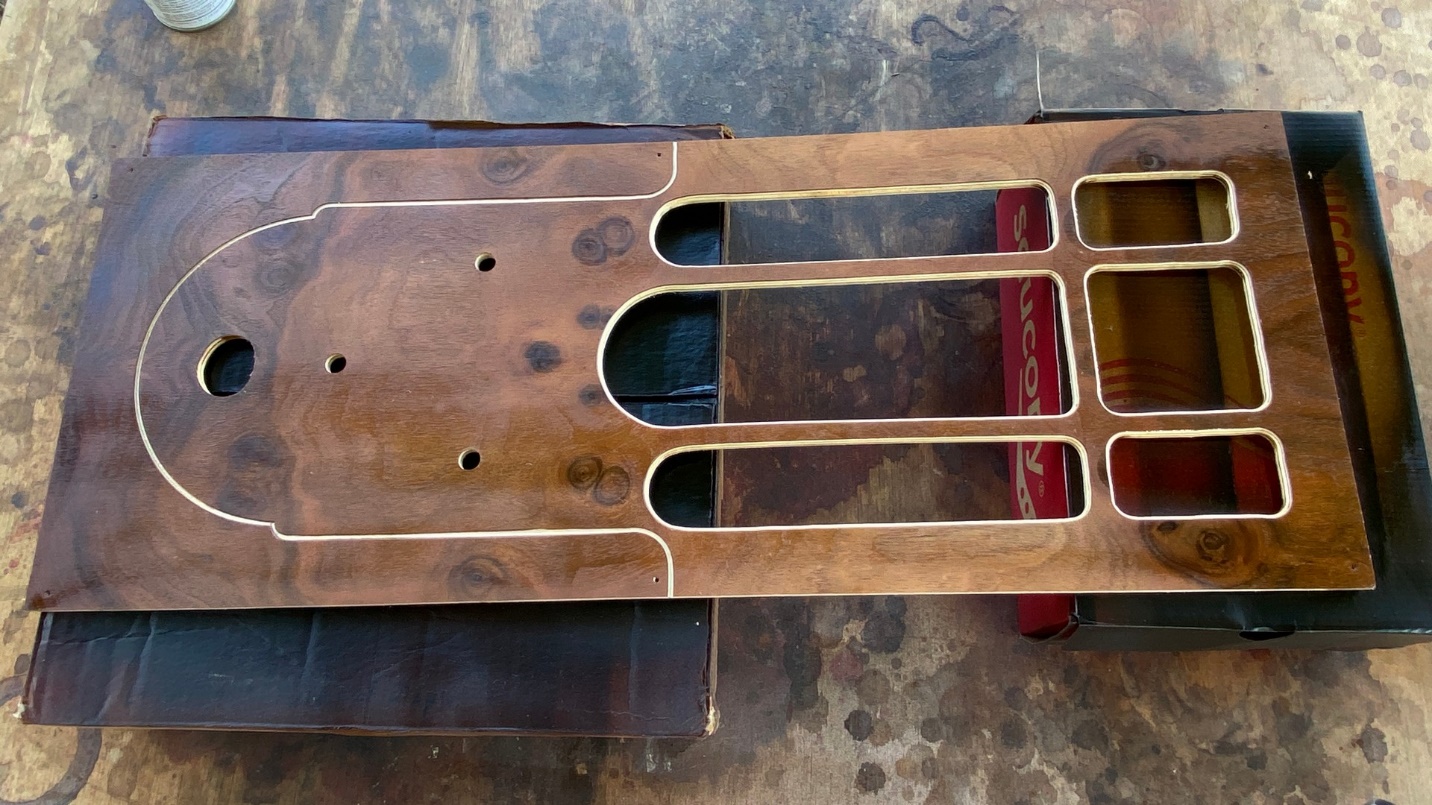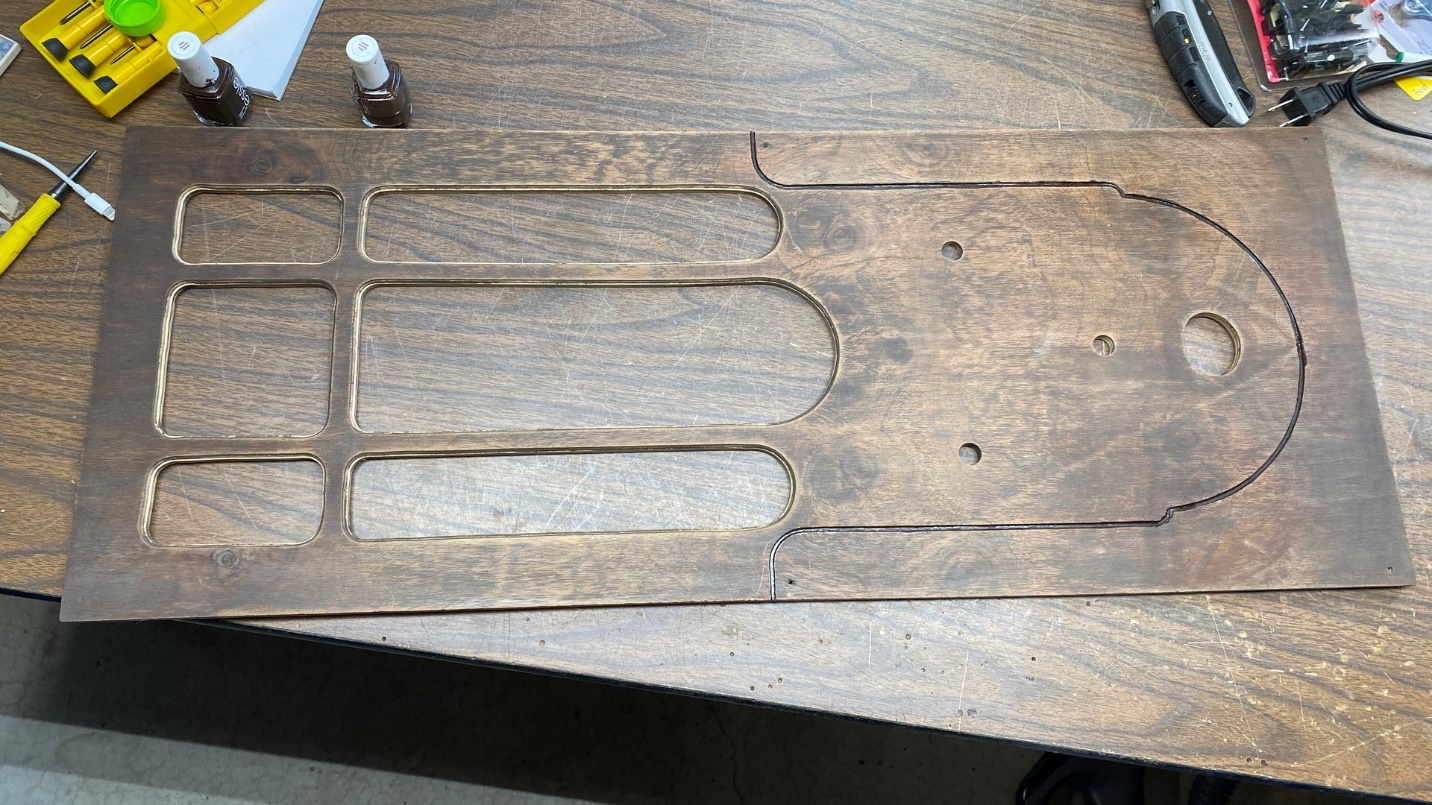
I traveled to the St. Louis area a number of years ago to purchase the Philco grandfather clock radio you see in the picture above. It came with no chassis and no speaker. The bottom portion of the original finial had been broken off, and the remaining part glued back into place. In addition, the cabinet was missing some trim pieces. As I recall, the original front panel was warped, delaminated, and in generally very poor shape.
The front panel gave away the fact that this had originally used a model 52 chassis. The smaller escutcheon hole, as well as the panel having three widely spaced control shaft holes instead of four closely spaced holes, helped to confirm this. This is the reason why I went to the trouble to make a three hour drive (one way) to get this cabinet in the first place. You see, Model 70 (technically, model 570) grandfather clock radios are somewhat common, but model 52 grandfather clock radios are very few and far between in comparison.
I sent the cabinet’s front panel to Steve Davis, who very kindly made a replica of the original front panel.
Then the cancer diagnosis happened in 2018. This radio, along with many others, was put on hold while I endured several rounds of chemotherapy and radiation.
Having emerged from all that with an “incurable” diagnosis but finally feeling like tackling radio cabinets again, I wanted to finally get this new front panel lacquered and installed in the cabinet.
In the interim, I acquired some extra cabinet trim pieces. I also found a source for a new wooden finial which closely resembles the original finial, and purchased one of these.
I was determined to make summer 2023 be, for me, the “Summer of Cabinets.” I undertook a number of radio cabinet projects, more than I ever have in one warm season. Among these projects was that grandfather clock.
In late September 2023, I finally pulled out that grandfather clock panel, and sprayed it with two coats of sanding sealer.

The reproduction grandfather clock front panel, after spraying with sanding sealer.
The next step was to fill the pores of the wood with grain filler. I applied the filler inside, but the panel was so large and room at my workbench at a premium. Therefore, I ended up taking the panel back outside to rub out the excess grain filler. It was then returned inside to the basement, and left to dry overnight.
My next step, after the grain filler had completely dried, was to sand off the excess filler. After doing this, I began to paint the routed groove in the panel, as well as the inner edges of the grille openings, with dark brown nail polish.

The grooves in the front panel has been painted with brown nail polish, and the process of painting the inner edges of the grille openings had begun.
This turned into a job that took up much of two days. A complicating factor was the fact that I was nearly out of the brown nail polish, and this turned out to be a type which was no longer being manufactured. So, by adding lacquer thinner to the tiny amount of polish I had remaining, I was able to make it stretch out just enough to complete the process of painting around the grille openings.

The panel is now ready for toner.
Once I finished that job, I let the nail polish dry. Returning to the panel an hour or so later, I began to sand the panel once again. My reasons for doing so were twofold – one, to remove and remaining excess grain filler, and two, to remove and excess nail polish which I did manage to get on the outer surface of the panel.
Finally, the panel was ready for the application of toning lacquer. I had already decided to use Mohawk Ultra Classic Dark Walnut toner, as this seemed to be a close match to the overall color of the grandfather clock.
Friday, October 6, 2023 was the date when I took two cabinets and this grandfather clock panel outside to spray lacquer. I mention that date because it was one of the last days which was warm enough to spray lacquer. As it turned out, it felt warmer inside the garage than it did just outside the garage where I had been spraying cabinets throughout the summer. Therefore, I moved my truck out of the garage, and set up my folding work table inside for the day’s spraying.
I gave the grandfather clock panel three coats of Mohawk Ultra Classic Dark Walnut toner, followed by three coats of clear lacquer.
From here, the weather forecast was calling for a few days the following week which would be warm enough for spraying lacquer – but not the next two or three days.